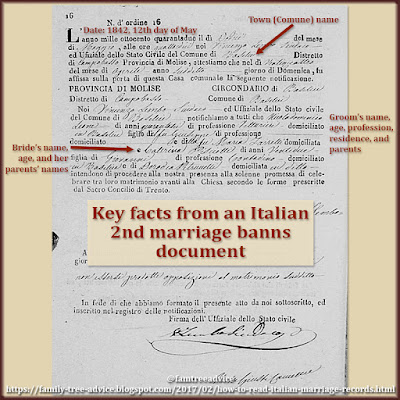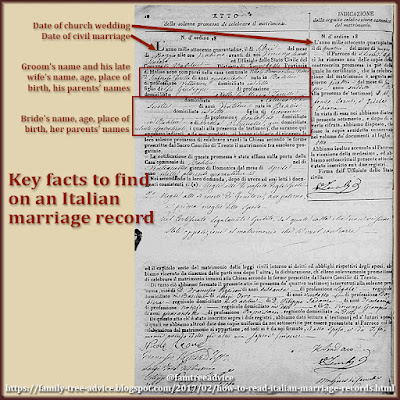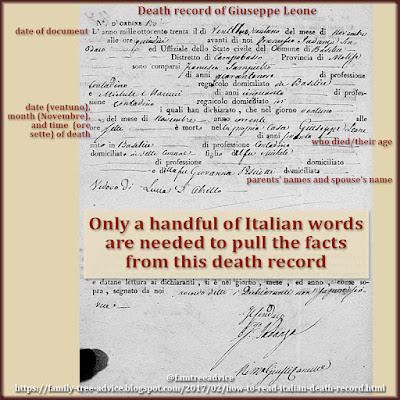Here's a lesson that supports my earlier post, "How Is That Possible?" When my recent post about Italian marriage records led me to discover a mistake I had been making, I spent three solid days correcting my tons of such records in my enormous family tree.
The work was tedious, but after a while I realized that this change I was making—reclassifying certain dates as "marriage license" rather than "marriage"—provided the answer to a question that had come up a number of times.
I had quite a few men (these are small-town Italian men in the 1800s) who had gone through the process of posting their intention to marry a woman and then seemed to marry her, but went through the same process with another woman a month later.
What was going on? Divorce was not a thing, and the first wife had not died. In fact, I had proof that the first woman then went through the process with another man and married him.
Once I learned that they had not gotten married, but had merely obtained consent to marry, it became clear: The first couple intended to marry but something prevented the marriage. Each of them was then paired with someone else whom they did marry.
I feel this corrected and more logical information makes my family tree even more solid. So I ran Family Tree Maker's built-in error report and uncovered a page full of birth date discrepancies. Some people had two birth dates from conflicting resources, while others had an original placeholder date that had been superseded by documented facts. So I was able to clean up all of the errors.
I even figured out and fixed the error I highlighted in How Is That Possible? where I had two Michele Leone's with the same birth date. The date belongs to my grandfather's first cousin; the other Michele Leone is a more distant relative born a different year.
Now I'm itching for other discrepancies to fix!







